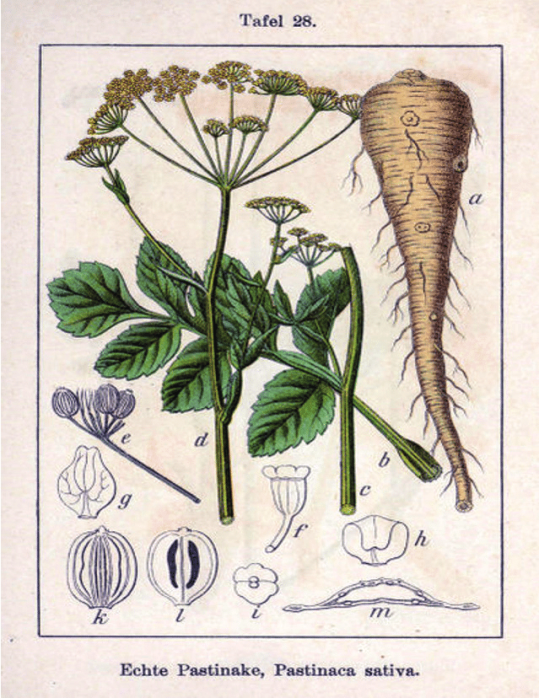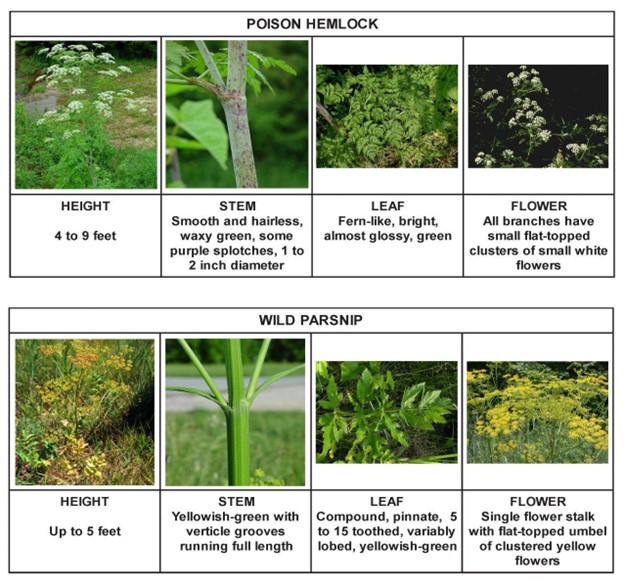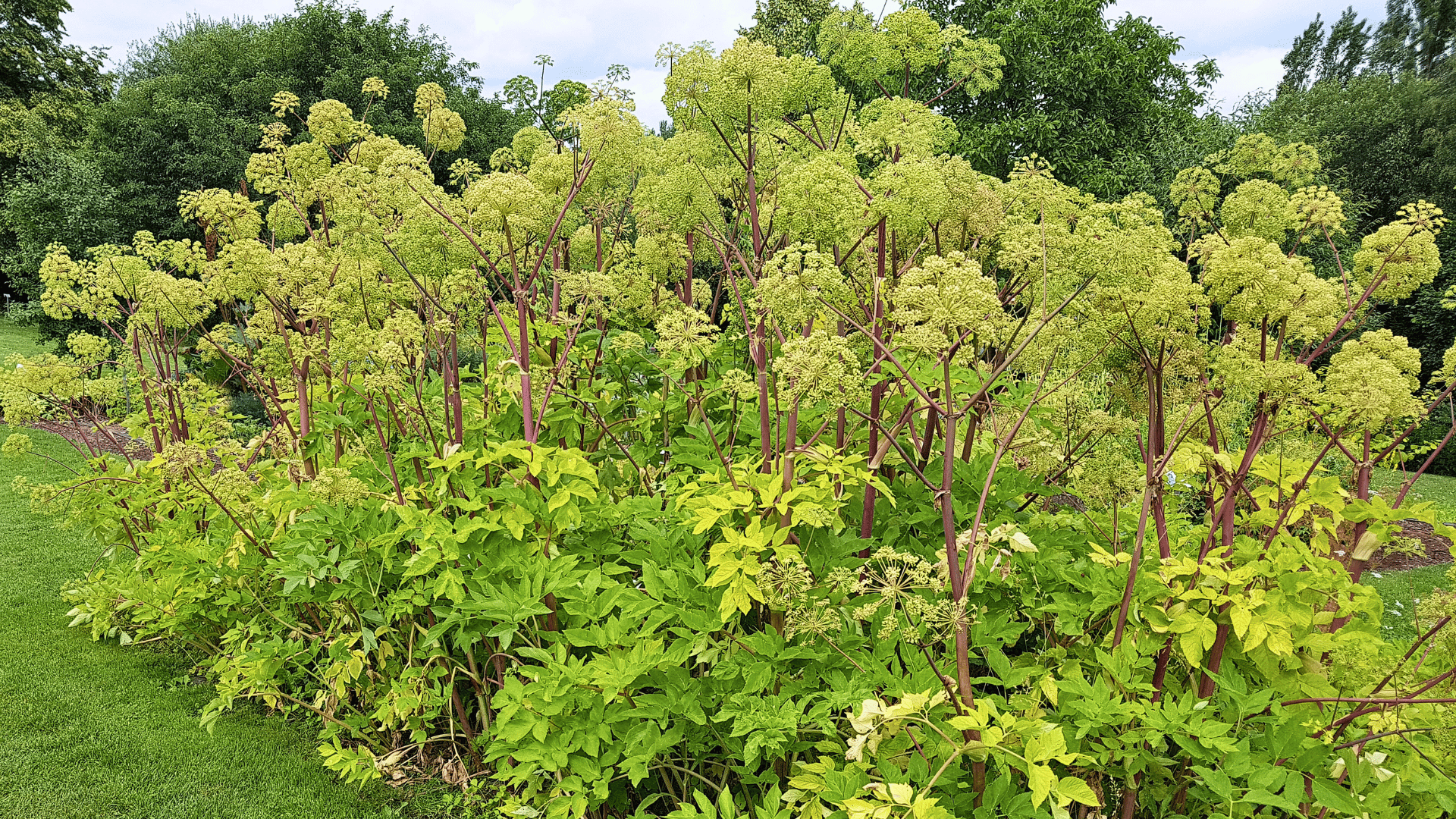Welcome to the wild world of the Apiaceae plant family.
Apiaceae (Umbelliferae), also known as the carrot family, is one of the largest plant families. It is composed of 466 genera and about 3800 species that are distributed worldwide. Many members of this family are well-known by people from different cultures due to their odors, flavors, and even their toxic properties in some cases.
The most famous members are culinary spices and seeds that are commonly used for pickling such as anise, fennel, cumin, caraway, dill, parsley, coriander, etc. The root parts of the family members play an important role in traditional medicine, the most popular among them being: carrots (Daucus carota), celeriac (Apium graveolens), parsnips (Pastinaca sativa), angelica (especially Angelica dahurica), parsley root (Petroselinum crispum), alexanders (Smyrnium olusatrum), pignut (Conopodium majus), and skirret (Sium sisarum).[1]
A number of species are economically important as leaf and root vegetables, herbs and spices, and garden ornamentals. See also list of plants in the family Apiaceae.
The complex origins of vegetables and medicinal plants in Apiaceae:
Although >70% of Apiaceae family genera are distributed in the Northern Hemisphere, biogeographical and molecular phylogenetic studies demonstrated that the Apiaceae family originated in the Southern Hemisphere. Furthermore, Australasia was estimated to be the place of origin of crown Apiaceae plants during the early Paleogene.
The Apiaceae family has been mainly divided into four subfamilies: Azorella, Centella, Apioideae, and Eryngium. Apioideae subfamilies include several important vegetable crops: celery, carrot, parsley, water dropwort, and coriander. However, each of these Apiaceae species has distinct origins.
Carrot and celery originated in Middle Asia around Afghanistan, and slowly spread into the Mediterranean area. The earliest recorded carrots were mainly purple or yellow, with some white or black species, instead of orange. Parsley originated in the late third century BC on the Mediterranean coast, where it was used for decoration and seasoning. Water dropwort originated in Europe and the Mediterranean region, whereas coriander originated in the Middle East region.
The Apiaceae family also contains many important Chinese herbal plants; the origins of many of these plants remain unclear. For example, recent studies revealed that the Angelica group has been cultivated for food and medicine since at least 800 AD [2], and originated in the Middle East, possibly Syria, or northern European countries. Although the Apiaceae family contains many species, most of the members of this family have not been comprehensively investigated, especially vegetables and medicinal species.
Bioactive compounds in vegetables and medicinal plants in Apiaceae:
All vegetables and medicinal species in Apiaceae have effective secretory systems involving different organs, including roots, stems, leaves, flowers, and fruit. According to previous studies, the biologically active compounds of Apiaceae plants can be divided into two groups: nutrients and nutraceuticals [3].
Nutrients are important plant growth regulators that mainly include minerals, proteins, fiber, carbohydrates, and lipids. In contrast, nutraceuticals, a portmanteau word derived from ‘nutrition’ and ‘pharmaceutics’, are non-nutritive plant compounds with high antioxidant activity. Nutraceuticals, which mainly include polyphenolic compounds, polyacetylenes, and terpenoids, are thought to promote health and are used in the food processing and dietary supplement industries.[4]

Image source: Botanical illustration of the wild parsnip Pastinaca sativa L…. | Download Scientific Diagram
Angelica Root
Angelica is a genus of plants and herbs that’s often used in traditional medicine, particularly in Asian countries. The roots of many species of Angelica are used to make herbal medicines.
Plants in the Angelica genus grow up to 10 feet (3 meters) tall and have globe-like clusters of green or yellow flowers that blossom into small yellow fruits. They also tend to have a strong, unique smell due to the aromatic compounds they contain. The scent is often described as musky, earthy, or herbaceous.[5]
Angelica sinensis vs archangelica Species
A. sinensis is known by a variety of names, including dong quai and female ginseng. It’s native to China and other countries in East Asia, where it’s used primarily in traditional medicine to treat female hormonal issues.
On the other hand, A. archangelica is commonly known as wild celery or Norwegian angelica. This type grows mainly in European countries, where it’s used in certain culinary applications or as an herbal medicine.
Although the name “angelica root” implies that just the root is used, most A. archangelica supplements and herbal medicine products contain the root, seeds, fruits, and/or flowers of the plant. A. sinensis products are typically only made with the root of the plant.
A. sinensis benefits [6]
- Ligustilide is a powerful compound comprising approximately 1% of the plant, and contributing to its strong fragrance.
- Angelica root supplements are promoted for use in brain cancer treatments, but extensive human research is still required to validate its effectiveness as a cancer therapy option.[7]
- A. sinensis may promote wound healing by encouraging angiogenesis, or the creation of new blood vessels.
- One of the most common uses of A. sinensis, especially in traditional Chinese medicine, is the management of menopausal symptoms and other female hormonal issues.
A. sinensis may provide protection against both osteoarthritis, or joint “wear and tear,” as well as rheumatoid arthritis (RA), an inflammatory, autoimmune condition of the joints.
A. archangelica benefits [8]
- Archangelica — like A. sinensis — shows some promising anticancer and anti-tumor effects. For example, it has been found to kill breast cancer cells in test tubes and inhibit tumor growth in mice. It may have similar effects on cervical cancer, larynx cancer, and rhabdomyosarcoma cells.[9][10][11]
- A. archangelica may also kill harmful bacteria, viruses, and fungi. In test-tube studies, its essential oil exhibited antibacterial effects against Staphylococcus aureus and Escherichia coli.
- It has anti-anxiety effects. There is some compelling evidence from animal studies that A. archangelica may help reduce anxiety.[12][13]
The mixture of coumarins isolated from A. archangelica and its constituents imperatorin and isoimperatorin have the potential to reduce anxiety but it is the mixture which have more significant activity as compared to its individual components.[14]
A. archangelica is widely used in food and liquor preparations and also in Kashmiri folk medicine to reduce anxiety. The anxiolytic effect of successive extracts of A. archangelica (SAE) was observed in rats tested in the elevated T-maze test (an animal model of generalized anxiety) at doses that exhibit antidepressant-like activity in humans.[15]
Beware of Toxic Species
However, caution must be practiced as the Apiaceae family (formerly Umbelliferae) contains several highly toxic species, including Poison Hemlock (Conium maculatum), Water Hemlock (Cicuta virosa) and Hemlock Water Dropwort (Oenanthe crocata).[16] These plants are known for their toxicity and can be mistaken for edible plants due to their similar appearances.
Water Hemlock (Cicuta virosa) is a genus of four species of highly poisonous plants in the family Apiaceae. This is unique in the family Apiaceae in that it has leaf veins which terminate in the notches between the leaf tips rather than extend to the tip of the leaf, as is found in the leaf structure of other members of this family.
Hemlock Water Dropwort (Oenanthe crocata) is a flowering plant in the carrot family, native to Europe, North Africa, and western Asia. It grows in damp grassland and wet woodland, and all parts of the plant are extremely toxic, causing human and livestock poisoning.
Poison Hemlock (Conium maculatum) is a biennial plant that forms a rosette its first year and produces white umbrella-like flowers on tall stems in the spring-summer of its second year.

Image source: https://nyis.info/invasive_species/giant-hogweed/
These toxic species can be difficult to distinguish from edible plants, so it is essential to learn the specific characteristics of both edible and toxic species in the Apiaceae family.
Exploring the Apiaceae family has been a journey through nature’s kitchen and medicine cabinet. These plants spice up our food and offer natural healing. Remember, some are toxic, so we must be careful.
Got any stories or tips about these plants? Share in the comments! If you enjoyed this, spread the word by sharing this blog. Let’s keep the conversation about nature’s wonders going!
References:
- Phytochemical Constituents, Folk Medicinal Uses, and Biological Activities of Genus Angelica: A Review – PMC
- Origin, evolution, breeding, and omics of Apiaceae: a family of vegetables and medicinal plants | Horticulture Research | Oxford Academic
- The 9 Best Teas for Digestion
- Apiaceae Family in Agriculture | Encyclopedia MDPI
- Angelica Root: Benefits, Uses, and Side Effects
- [Child poisoning after ingestion of a wild apiaceae: a case report]


